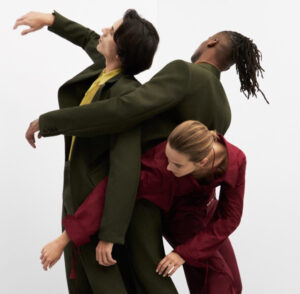There are no fireworks for it. No ticker tape parades or public holidays. But for a specific subset of the population, an unofficial celebration circulates through digital timelines like a secret society’s nod—a height-based kinship that asks for nothing more than a pause, a grin, and maybe a subtle flex: “Happy Height Day to everyone who is 5’8” tall.”
It sounds like satire. And maybe it is. But embedded in that playful declaration is a striking truth: to be 5’8” is to exist in the liminal. Not quite tall, not quite short, 5’8” is the height of compromise and contradiction. It’s a measurement that avoids extremes but endures them culturally. Statistically average in many countries, but socially charged in subtle, often unspoken ways, 5’8” becomes more than a number—it becomes a commentary.
This editorial is not about measurement alone. It is about meaning. In a world obsessed with optimization and spectacle, what does it mean to live at the median? To not stand out by towering over others, nor to be dwarfed by societal expectations? And more provocatively: could being 5’8”—both literally and metaphorically—be the very condition that fosters resilience, self-definition, and success?
The Numbers Don’t Lie—But They Do Whisper
Let’s begin with data. In the United States, the average male height hovers around 5’9”. In many European and Asian countries, it’s slightly less. To be 5’8” is to be comfortably nestled in that statistical sweet spot—neither outlier nor anomaly. And yet, in the realm of perception, the narrative shifts.
In dating apps, job interviews, athletic competitions, and fashion editorials, height gets weaponized. Six feet, once just a round number, has become a milestone—particularly for men—framed as a threshold of desirability, dominance, and even moral character. Sub-six-foot men are often left to contend with tropes that play out in humor and humiliation: the memes, the jokes, the high-heeled compensations.
So why celebrate 5’8”? Because it reclaims space. It resists the tyranny of excess. And in doing so, it elevates what might otherwise be overlooked.
5’8” as Cultural Mirror
In fashion, 5’8” means different things depending on gender. For women, 5’8” often hits the lower threshold of traditional modeling standards—a height long associated with sample sizes and runway silhouettes. But even here, nuance exists. The rise of street style, e-commerce modeling, and social media micro-influencers has democratized representation, allowing a broader spectrum of body types and heights to take up visual real estate.
For men, 5’8” has often been coded as “short”—a label that says more about arbitrary ideals than reality. Yet, many of the world’s most successful men—actors, musicians, politicians, designers—sit at or near this height. Robert Downey Jr., Mark Wahlberg, Prince, and Tom Cruise have all had to navigate the cultural fixation on tallness, sometimes with humor, sometimes with elevated shoes.
But success isn’t always about stature. In fact, success despite stature—or more precisely, success in the face of cultural bias—often fosters a particular kind of cunning. You learn to read a room. You develop charisma as compensation. You become fluent in presence.
The Statistical Edge
Here’s where things get counterintuitive. Multiple psychological and economic studies have shown that taller people may receive certain advantages—higher salaries, more promotions, greater perceived authority. And yet, being “not tall” fosters other, equally vital traits: emotional intelligence, creativity, and resilience.
Take this paradox and frame it through 5’8”. At this height, you’re statistically close enough to the average to blend in, but still pushed enough by cultural bias to build psychological tools. You develop depth. You cultivate voice. You become agile—not just physically, but intellectually and emotionally.
And the people “celebrating over the next few days,” as the meme suggests, may statistically earn more money or get more swipes—but that doesn’t make them more interesting. It makes them visible. Visibility is not vitality. It’s often the quieter frequencies—like those of 5’8”—that carry the most meaning.
Height and Design: Built Worlds and Realities
Architecture and design reflect a different kind of truth: most things are built with the average in mind. From airplane seats to counter heights, turnstiles to VR headsets, the 5’8” to 5’10” body moves through the world with a peculiar ease. There’s a privilege in being the ergonomic target. While taller individuals duck under doorways or fold into theater seats, and shorter ones reach for cupboards or live behind crowds, 5’8” exists at the ergonomic equator.
Sneaker culture tells a similar story. Footwear, often designed with a specific body ratio in mind, balances better on the 5’8” frame. A high-top doesn’t overwhelm the leg. A chunky sole doesn’t scream insecurity—it complements proportion. Maybe that’s why 5’8” stylists, photographers, and designers know how to frame the shot. They’re living in the frame already.
Digital Irony, Real-World Wisdom
“Happy Height Day” began, of course, as a joke—a meme tossed into the bottomless echo chamber of social media. But like all good internet phenomena, it carries a wink and a truth. In a landscape where identity is algorithmically sorted, where filters can elongate legs and reshape jaws, a celebration of 5’8” is a quiet refusal.
It’s saying: I exist, precisely as I am. I am neither maximizing nor minimizing. I am occupying. That’s a radical act in a world of performative peaks.
It also resonates with Gen Z and younger millennials, who are redefining success not by corporate titles or penthouse views, but by wellness, creativity, and authenticity. For them, “average” is not a slight—it’s a space for multiplicity. To be 5’8” is to make room.
Celebrity Mythologies and the Invention of Tallness
The entertainment industry has long manipulated height through staging, camera angles, footwear, and casting. It’s not just about aesthetics—it’s about selling ideals. But behind the scenes, the truth emerges. Many leading men hover around 5’8”, despite public perceptions to the contrary.
This controlled narrative feeds into broader social insecurities, making “tall” synonymous with “strong,” “safe,” or “capable.” The result? Billions spent on shoes, suits, and digital posture. To be 5’8” in this landscape is to learn how illusions work—and more importantly, how to resist them.
A Celebration of Proportion and Presence
So what does “Happy Height Day” actually celebrate? It’s not an elevation of the average. It’s a refusal to be shamed by it. It’s a playful reclamation of the space between categories.
Being 5’8” isn’t just a biological fact—it’s a metaphor. For balance. For duality. For the middle ground that so often gets ignored in favor of extremes. In a culture that rewards the most visible, the loudest, the most clickable, to be 5’8” is to embody subtlety. To offer substance instead of spectacle.
There’s power in that. In any creative field—from music to tech, design to dance—the most enduring voices often come from those who know how to navigate margins. They aren’t celebrated for towering over others, but for the way they draw others in.
Final Notes on the Height of Humor
Humor is the height equalizer. “Happy Height Day” works because it doesn’t punch down or up—it punches inward. It invites those who know what it means to not be seen as tall but to feel complete.
There’s nothing funny about insecurity. But there’s something deeply empowering about humor that emerges from community. This meme, in its quiet way, affirms that the space between too much and not enough is where most of us live. And in that space, a kind of clarity emerges.
Happy Height Day, Indeed
So yes, Happy Height Day to those who are 5’8”. Cherish it not because you’re better, but because you understand the nuance. Because you know what it’s like to exist in a world that loves labels and refuses to be labeled. Because you’ve spent enough time adjusting to others’ expectations to finally define your own.
You are not short. You are not tall. You are 5’8”—and that’s enough.
No comments yet.








